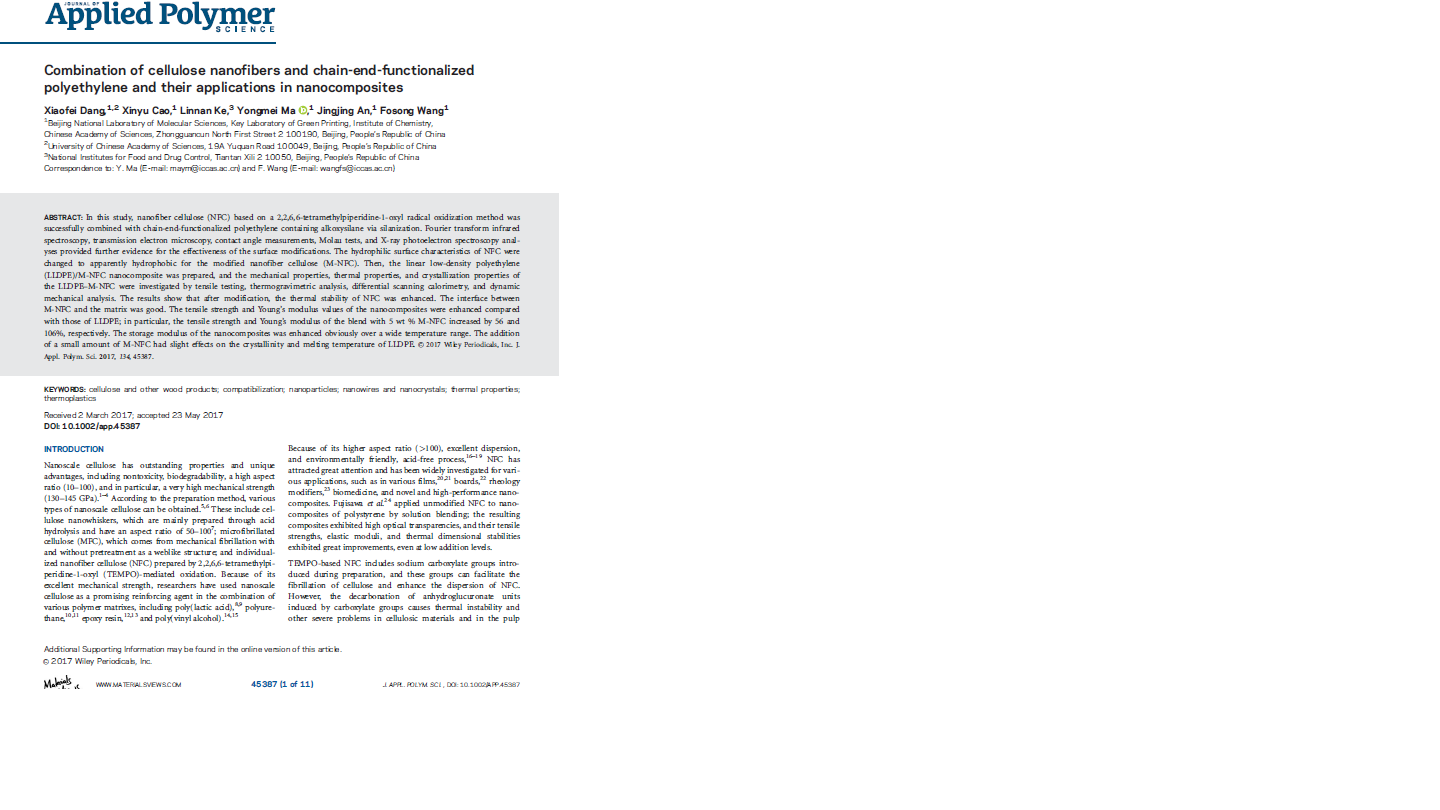In this study, nanofiber cellulose (NFC) based on a 2,2,6,6-tetramethylpiperidine-1-oxyl radical oxidization method was successfully combined with chain-end-functionalized polyethylene containing alkoxysilane via silanization. Fourier transform infrared spectroscopy, transmission electron microscopy, contact angle measurements, Molau tests, and X-ray photoelectron spectroscopy analyses provided further evidence for the effectiveness of the surface modifications. The hydrophilic surface characteristics of NFC were changed to apparently hydrophobic for the modified nanofiber cellulose (M-NFC). Then, the linear low-density polyethylene (LLDPE)/M-NFC nanocomposite was prepared, and the mechanical properties, thermal properties, and crystallization properties of the LLDPE–M-NFC were investigated by tensile testing, thermogravimetric analysis, differential scanning calorimetry, and dynamic mechanical analysis. The results show that after modification, the thermal stability of NFC was enhanced. The interface between M-NFC and the matrix was good. The tensile strength and Young's modulus values of the nanocomposites were enhanced compared with those of LLDPE; in particular, the tensile strength and Young's modulus of the blend with 5 wt % M-NFC increased by 56 and 106%, respectively. The storage modulus of the nanocomposites was enhanced obviously over a wide temperature range. The addition of a small amount of M-NFC had slight effects on the crystallinity and melting temperature of LLDPE.
